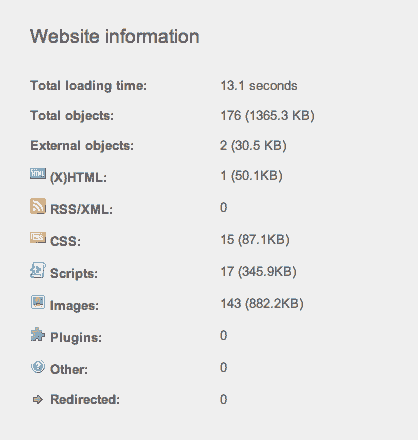Without a question, self-hosted WordPress is a terrific system. However, it can get bloated, resulting in a long load time. Let’s see the 3 Ways The W3 Total Cache Plugin Can Speed Up Your WordPress Blog.
Without a question, self-hosted WordPress is a terrific system. It is simply the greatest option for anyone looking to run a simple yet expandable content publishing system, from novice bloggers to major organizations. However, with a few plugins loaded, a complex theme with numerous stylesheets, and some Javascript jQuery effects, it can become bulky and slow to load.
If you’re utilizing shared hosting, the situation exacerbates, and your blog’s overall load time could be as long as 10 seconds or more. Not only would this provide a poor user experience, but Google will also penalize your site for being slow. In fact, according to a 2006 research, most users will abandon a task after 4 seconds, and that was 4 years ago!
Let me explain what the W3 Total Cache Plugin can do to help you speed up your WordPress blog.
Note: This article only applies to self-hosted WordPress press installations, whether they’re housed on a shared server, a dedicated private server, or your own home server.
How Do I Know If My Page Is Slow?
To begin with, merely accessing the page in your own browser is not a valid test because most of the objects will be cached locally, making the loading appear faster than it is. You’ll need to utilize a special testing tool to determine your site’s true page load time. You may accomplish this easily online by going to tools.pingdom.com and putting in your website’s URL.
The program will attempt to load your page without cache and will keep track of how long it takes and which items it must load. You’ll be given a lovely graph that may be used to identify any slow elements.

When it’s finished, check for the grey summary box at the bottom of the page. My page has strangely slowed down to roughly 13 seconds in total, which is astonishingly bad! Next week, I’ll walk you through the installation procedure step by step because it can be a little tough, as well as show you the outcomes.

What Does W3 Total Cache Do?
1. Caching Pages & Database Queries:
WordPress is an ever-changing platform. That means that whenever a page views, WordPress will go to the database, retrieve some data (such as your most recent blog posts, comments, and so on), play about with it to create a page that matches your theme layout. Then provide it back to the reader. All of this takes time and work, and it happens for each and every page on your site, even if the content doesn’t change for the most part. Rather than returning to the database and rebuilding the entire page each time, W3TC will store a completely constructed copy of the page in memory and transmit it directly to the user. If a new remark is made, it will be displayed as well, ensuring that your postings are always up to date.
2. Minify Your Javascript & CSS:
Some more complicated WordPress themes can include up to ten CSS files, with a lot of redundant or unnecessary code. If they display any form of output to the user, plugins also come with their own CSS files. Again, the browser must send a new request for each of these files with each page load. And even if they are small, the overhead time associated with requesting a file and initiating the transfer adds up quickly.
Minification is an amazing procedure that takes all of those files and compresses them into a single, small, efficient CSS file that covers all of the style components you require. Don’t worry, the files will appear identical to you when you alter them; however, the W3TC plugin will create a new file and deliver it to readers instead. Javascript files are the same way.
3. Optimize Your Browser Cache Settings:
Most browsers don’t know what files can be cached locally on a user’s computer by default. And most websites don’t offer the appropriate information that tells the browser what it’s okay to cache and for how long. That’s where W3TC comes in, since it ensures that the relevant settings are given to the user’s browser, allowing them to make good use of their local cache and decreasing the number of files that must deliver to them each time.
Conclusion
W3TC is one of the methods MakeUseOf use to optimize the website and make it as fast as feasible for you, the reader. Without it, we wouldn’t be able to serve the number of pages we do because the server would constantly crash and burn. W3TC, on the other hand, can make any WordPress system, big or little, function more efficiently, and your readers and Google will appreciate it. If you followed my advise from last week on how to make your blog popular, the next obvious step is to optimize your site to cope with that popularity. Keep a watch on the site next week as I lead you through a thorough W3TC plugin installation.
If you have any queries about caching to speed up WordPress, please leave a comment or ask a question in our ever-growing and dynamic questions and answers forum. Please let us know if you use another plugin and how you rate it. Check out my previous post for 8 effective techniques for growing your blog’s popularity if you haven’t already.
